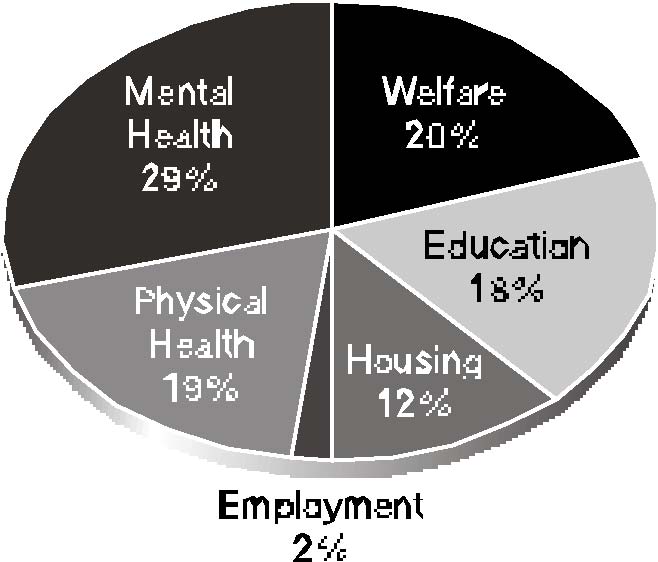 |
News | Sport | TV | Radio | Education | TV Licenses | Contact Us |
 |
News | Sport | TV | Radio | Education | TV Licenses | Contact Us |
TRC Final ReportPage Number (Original) 172 Paragraph Numbers 30 to 36 Volume 6 Section 2 Chapter 8 Subsection 4 Services recommended by the RRC30. As of 5 May 2001, the President ’s Fund compiled statistics reflecting which services were being recommended by the RRC, using a sample of 14 160. The following picture emerged :
National Interventions 31. These tables and graphs represent what the RRC officially recommended. However, the RRC has not been given reports on the actual implementation or assistance rendered to individual applicants. Information has been requested on many occasions from the Ministries of Justice and Constitutional Development, Welfare and Population Development, as well as the Social Cluster under the leadership of Dr Ayanda Ntsaluba, Director-General of Health. Up to the time of finalising this report, the Commission has been unable to establish how many approaches were made by victims and to what degree assistance was facilitated. 32. The failure of the responsible government bodies to provide the required information, combined with the fact that victims return constantly to the President’s Fund and the RRC empty-handed, points to a complete breakdown in the agreement forged between government (the Inter-Ministerial Committee on Reparation) and the RRC, as recorded in the quoted memorandum of 14 October 1998. 33. The appalling failure to meet the basic urgent needs of victims partly affirms the Commission’s recommendations that the implementation of the reparation and rehabilitation policy should be facilitated through the office with the highest authority, so as to ensure co-operation and accountability on the part of government departments. CHALLENGES IN PROCESSING APPLICATIONSUneven flow34. The uneven flow of application forms being received by the RRC meant that, when there was an increase in the forms received, the time it took to process them also increased. This was especially true of the period May 1999 to July 1999. 35. Four extra application form administrators were employed for the RRC, and the President’s Fund was also obliged to employ additional staff. This enabled applications to be processed within a six-week period (three weeks at the RRC and three at the President’s Fund). 36. At the same time, it is important to highlight that the Reparation and Rehabilitation process was at all times desperately under- resourced. The Commission’s position was that the role of the RRC should be to help initiate reparation processes. Because the process would ultimately be finalised within government, this is where full capacity should be developed. The result of uncertainty regarding the locus of responsibility for the reparation process meant that the RRC operated on an ad hoc basis and was, given the task at hand, ever under- resourced . |
||||||||||||||||||||||||||||||||||||||||||||||||||||||||||||||||||||||||||||||||||||||